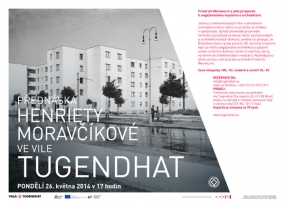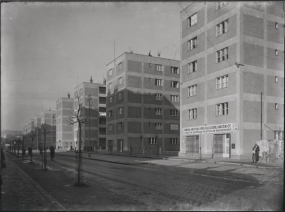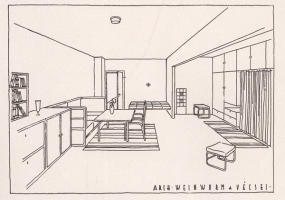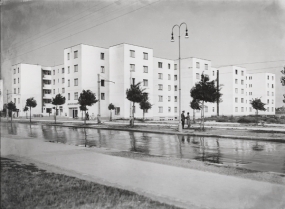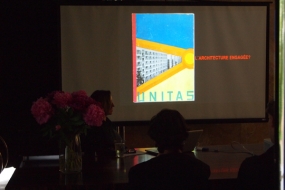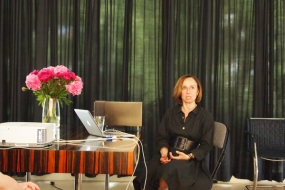Friedrich Weinwurm and his contribution to engaged thinking about architecture
One of the frequent topics in the current architectural discourse is the role of the architect in society. When looking into the history of architecture, however, we find parallels of such conduct among Renaissance utopians through the 19th century utopian socialists to representatives of the socialist avant-garde in the first half of the 20th century. It seems that efforts to immediately reflect the social situation and change it for the better through architecture occur regularly. Strategies that architects had been creating in the past have changed in relation to the spirit of the age and its crisis manifestations. While in the first half of the 20th century, planned societal changes were associated with a remedy to the problems of the industrial city and workers’ housing, later driving forces appeared to be particularly the issues of transport and energy or environmental issues in general.
Although the Slovak environment can not be considered a melting pot of social and architectural discussions, yet it appears that in the first half of the 20th century, Bratislava was a place where engaged architecture could be applied not only in the form of discussions, texts and drafts, but also as architectural realizations. A decisive role was played here specifically by architect Friedrich Weinwurm. The realization of Unitas and New Age housing units was accompanied by explicitly formulated concept of architecture and building production as a direct instrument to implement changes in social order, thereby including it among the breakthrough projects in the context of thinking about social housing in Slovakia and in the wider regional context. Unitas and the New Age can be simultaneously considered a first consistent contribution of the Slovak architectural scene to the core theme of the European avant-garde at the turn of the 1920’s and 1930’s.
In the current context of searching for new roles of the architect is therefore useful to know the course, manifestations and consequences of engaging architects in favour of social changes in the past. This will help us first of all to know deeper the architectural profession, but also objectively evaluate architectural works, which can be considered tangible manifestations of this phenomenon. At the same time it can facilitate the position of those who would try to present a similar vision in today's relativist era.
Professor Henrieta Moravčíková, Research Fellow and Head of the Department of Architecture at the Institute of Construction and Architecture, Slovak Academy of Sciences; Vice Dean for Science, Research and Graduate Studies at the Faculty of Architecture STU. She focuses on the theory, history and critique of architecture of the 20th and 21st century. Since 2000 she has been acting as President of the Slovak DOCOMOMO Working Group – an international organization for research and protection of modern architecture. She has prepared a number of domestic and international architectural exhibitions. Together with M. Dullo she is co-author of an extensive book publication "Slovak Architecture in the 20th Century" (Slovart 2002) and compiled the first aggregate monograph on Slovak architecture "Architecture in Slovakia: A Short History" (Slovart 2005). Is the winner of the Literary Fund Award and Martin Kusý Award for theoretical work in the field of architecture.
The lecture takes place on Monday 26 May 2014 at 5 p.m. on the technical floor of Villa Tugendhat (a tour of the villa is not included in the lecture).
Entrance fee is 100,- CZK; students and seniors 50,- CZK.
An advance booking is required for the lecture, by telephone at +420 515 511 015/017
or e-mail: info@tugendhat.eu (limited capacity of 70 people).
The poster can be downloaded here.
